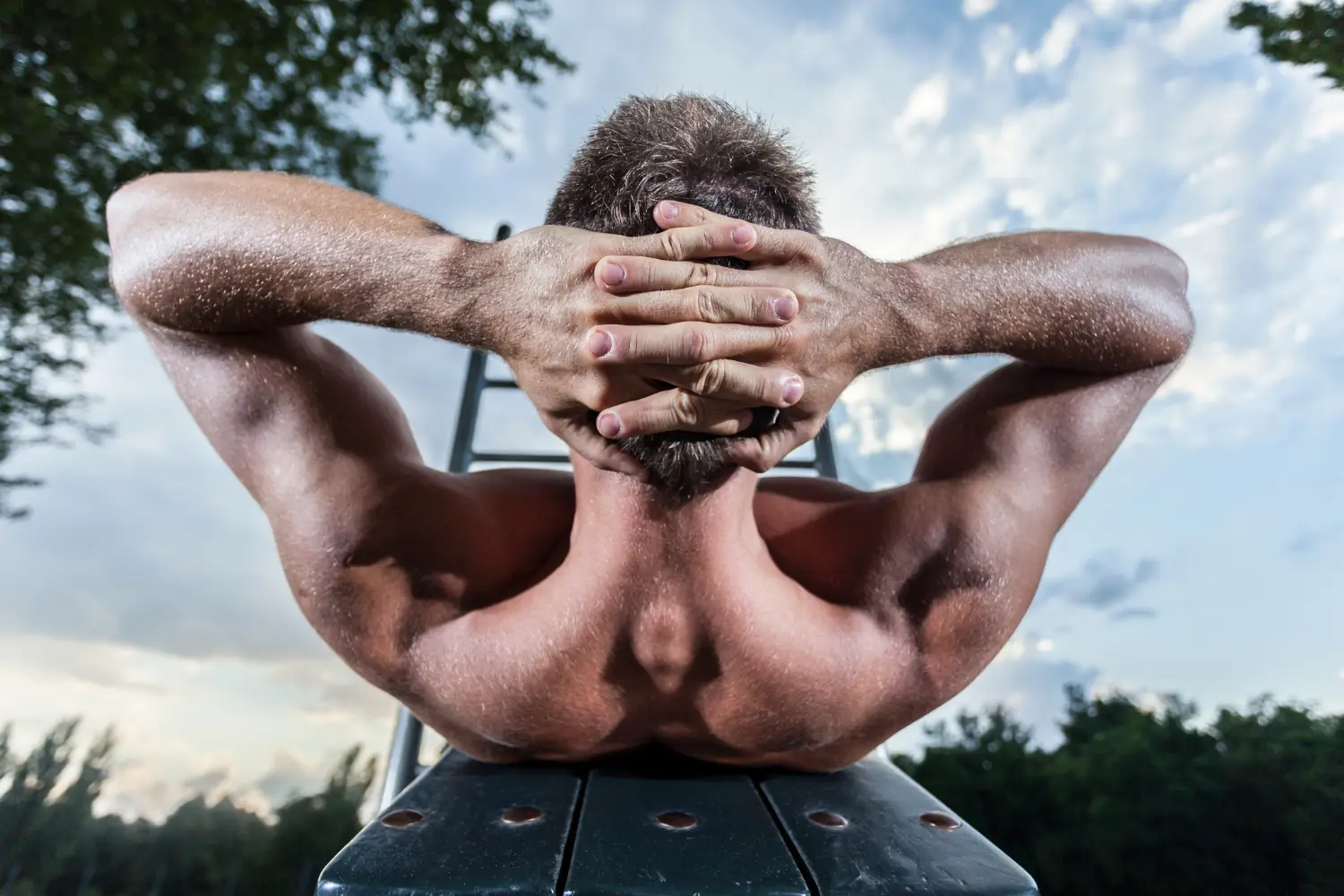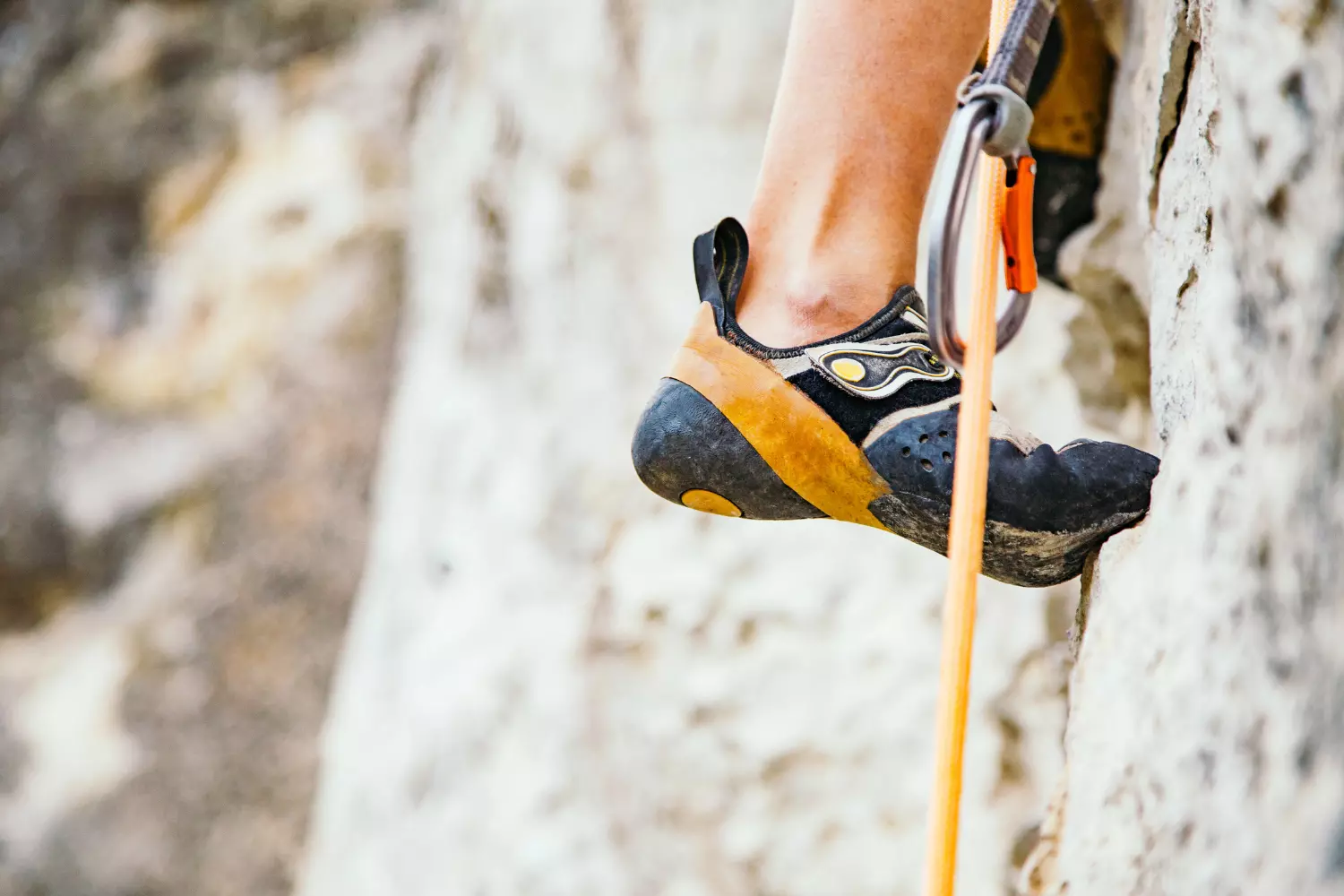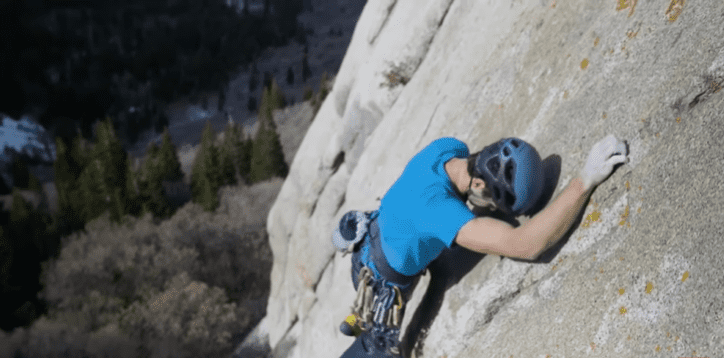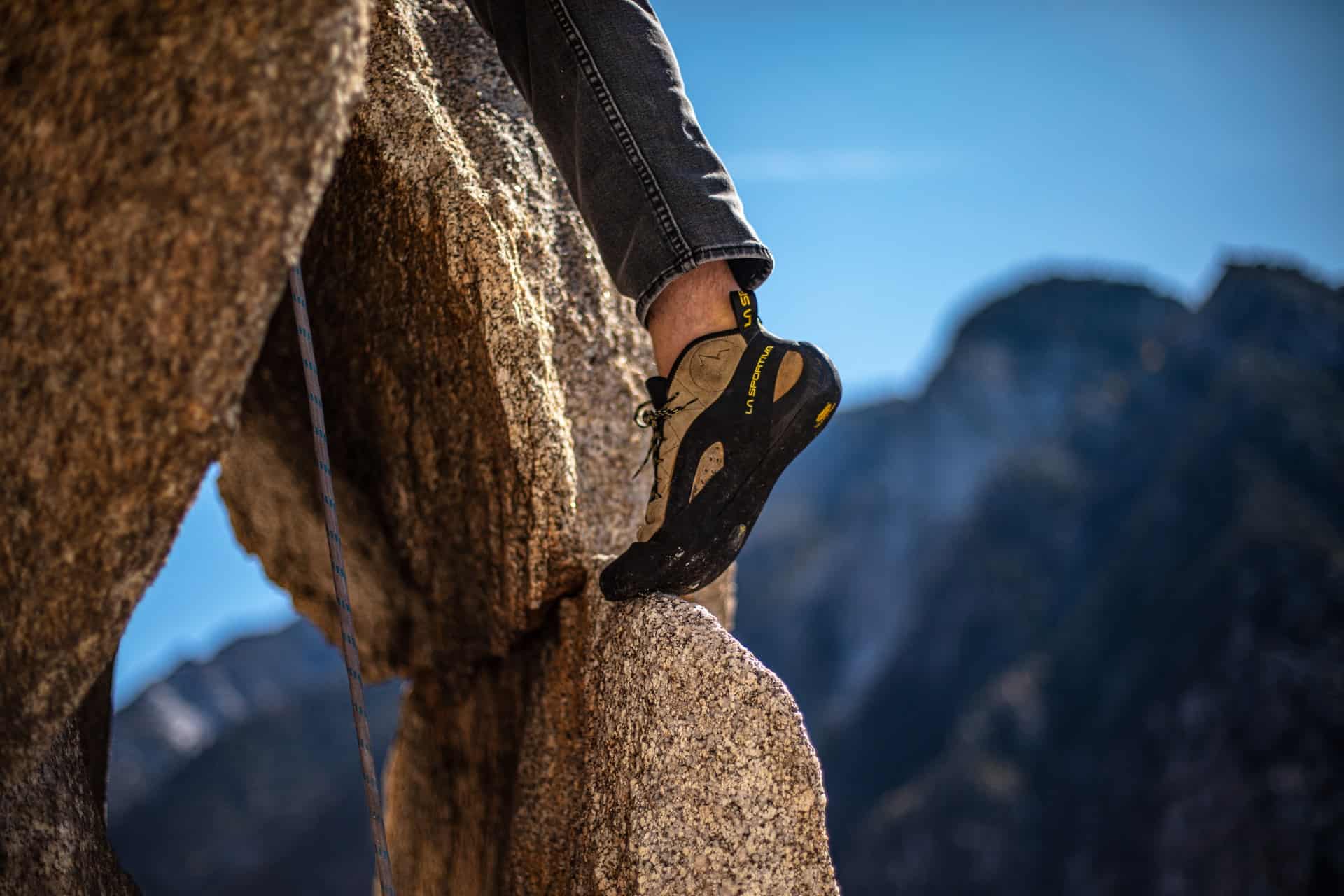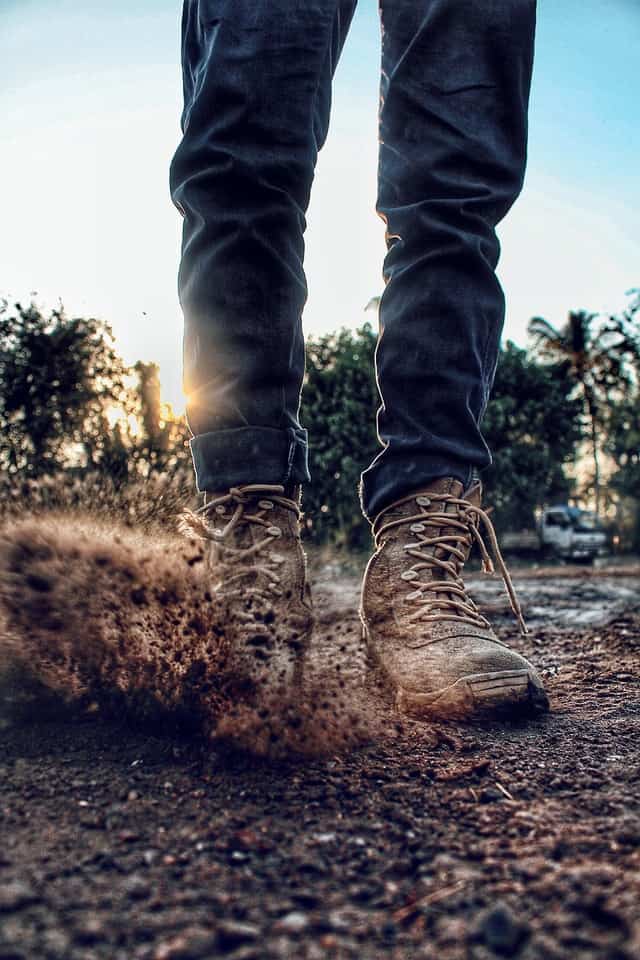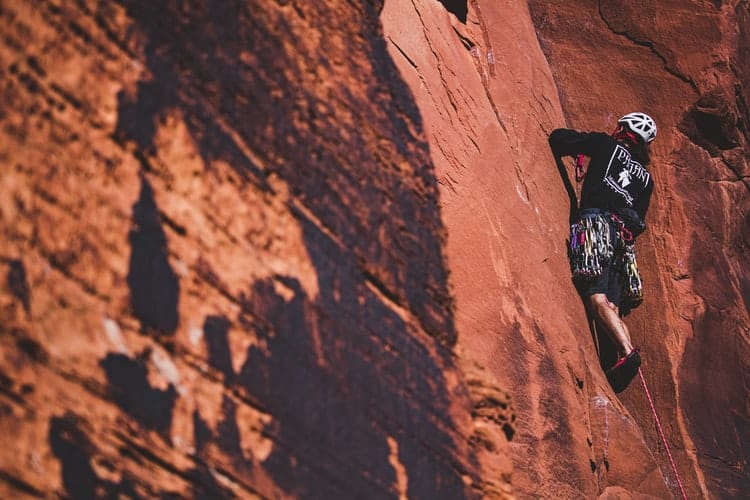Weight training is common in climbing training. It consists of using extra body weight. How you add it will depend on the exercise. But if you want to apply it to climb, the most common is to use a belt or a weighted vest. These adapt to your body, respecting your movements thanks to a minimal alteration of the center of gravity.

SPECIFIC CLIMBING EXERCISES WITH WEIGHT
Directed exercises are those that are focused on the direct improvement of the climber’s performance. Included here are those exercises specific to climbing training, based on their movement patterns.
CAMPUS BOARD
Training with Campus Board is one of the most aggressive training to improve climbing. To be efficient, it must be done with a head. The intensity and difficulty of the work on the campus board are adjustable by controlling a series of parameters:
The use of ballast can be harmful if you have not prepared yourself gradually. It is only recommended for climbers who have been practicing Campus Board exercises for years, as it can be very aggressive for the tendons and joints.

SYSTEM WALL: HYPERGRAVITY-SPECIFIC TRAINING (HIT)
The system wall is a wall in which there are vertical rows of equal and equidistant dams. In this way, it allows you to work a type of grip in a specific and controlled way. The wall usually has an angle between 35 and 50 degrees with respect to the vertical.
Eric Horst created hypergravity-specific training (HIT), discussed in his books on training. It consists of making vertical series of movements in a single type of grip.
The climber will use ballast to adjust the intensity. Depending on the number of movements and duration of each execution, it will be more focused on strength resistance or maximum strength.
SUSPENSIONS IN MULTI-PASS BOARD
Without a doubt, the most common specific exercise among intermediate and advanced climbers is hanging on a multi-hold board. By having more control over the exercise, it is less aggressive.
The usual thing is to work the types of grip with more transfer:
Once you have a base, you will be able to practice more types of grip such as tweezers, bi-fingers, and single- fingers… and vary their positions and combinations.
The weight of the ballast depends on your goals:
The intensity will depend on 4 variables:
These variables are like the slices of a pizza. If a larger one is made, the rest will have to reduce their share. That is, if you press more on one, you will have to soften some other. How you use them will depend on your goals.
If you use weights, you will be doing it on larger prey and will decrease the time in suspension in each repetition. Avoid reaching muscle failure or your body will need more time to recover.
Scientific studies point to the climber’s grip strength as the most determining quality in his performance. If you’re just starting out, give your tendons time to get stronger by climbing first. In addition, in the beginning, technical efficiency will be more decisive in your progress.
When you start with the suspensions, reducing the size of the holds will increase their difficulty. When size begins to be a limitation, the use of ballast will come into play.
Don’t be in a hurry. Unfortunately, epiphyseal and overload injuries are very common. In most cases, they could have been avoided by properly training each person.

ACCESSORY EXERCISES WITH WEIGHT
You can use ballast in all kinds of functional and calisthenic exercises: push-ups, squats, lunges, burpees, sit-ups or core exercises, dips on parallel bars, rings,… By not looking for a transfer of technique to climbing, the amount of ballasted weight will depend on the intensity pursued. Be careful, this does not mean that you have a bad execution technique, as it could end in injury.
The 1RM or 100% will be the maximum total load with which you can perform a single repetition with the correct technique. This is the result of the sum of your own body weight and the ballast you add.
From here, you will be able to calculate different percentages according to the objectives pursued in the training session or specific exercise, and according to the type of main muscle fibers, you want to influence:
Each percentage has its equivalence in intensity quantification scales, which are very convenient for self-regulating training every day. Although it must be said that these percentages are not written in stone and will depend on the genetics of each climber.
WEIGHTED PULL-UPS
Weighted pull-ups are a great exercise for working on pulling power. Make the ascent (concentric phase) always with the intention of the highest possible speed. The eccentric phase (the descent), makes it controlled.
Play with the variability of the exercise: the position of the hands, the distance, and the height of the grips, one to two arms… Also vary the grips of the hands, in a supine, prone, mixed or neutral position.
ISOMETRIC LOCKS AND FRENCHIES
Weight blocks are another interesting exercise. They work on isometric strength, which is especially important in rope climbing, due to the bracing. It is convenient to train them at different angles and vary the position of the arms since the adaptations of this type of training occur in the angle and positions worked on.
Frenchies are a great upper body strength-endurance training exercise. They combine isometric contractions interspersed during the execution of pull-ups.
Start by performing a normal pull-up, but when you reach the highest position, hold the lock for 5-10 seconds. He then descends. After reaching the bottom position, he begins another pull-up without resting. This time you stop when going down when you have your arms at 45º. After 5-10 seconds, finish lowering. So, you go back to doing another pull-up. In this last, one you will block a little before reaching the final position, keeping the elbows at about 120º.
Finally, it should be noted that blocking training is not for everyone, and that going too far with the load is a common reason for overloading the elbow.
EXCENTRIC OR NEGATIVE EXERCISES
In these exercises, only the eccentric or negative part of the movement is executed. In this way, you can get to work above your 1RM, reaching 140% or more of your maximum concentric strength.
Negative pull-ups are a great pull-strength exercise. Start in the highest position of a pull-up and try to hold the descent in a controlled manner.
Depending on the case, they can serve both climbers unable to perform a pull-up and other advanced climbers who work with a supramaximal load. You can go deeper in the article on eccentric training.

TRAINING WITH WEIGHT FOR CLIMBING
Applying the ballast to the climbing activity is the method with the highest transfer. You can do it in several ways:
Regardless of the type of climbing you do, you can use ballast to:
ASPECTS FOR TRAINING WITH WEIGHT
To climb with ballast you must take into account:
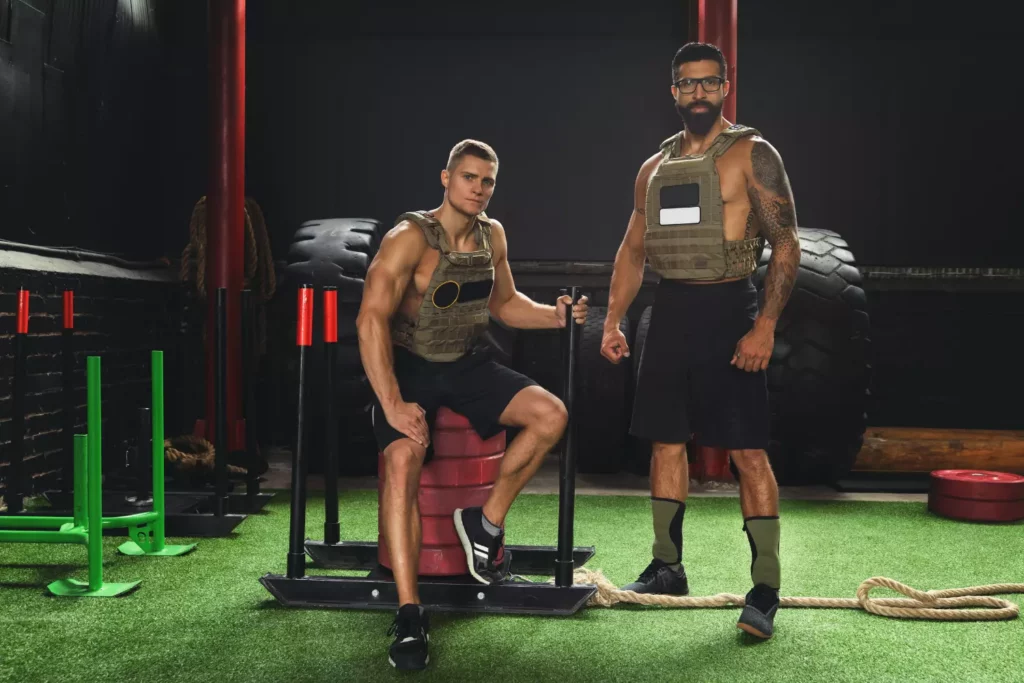
HOW TO ADD BALLAST
On the way to add the ballast, it will depend on the exercise you are going to do. It is not the same for an activity that you barely move as for another in which you need to move as freely as possible:
THE WEIGHTED VEST
There are options like this vest or this one that is great as they allow you to distribute the weight around the waist.
In the 10 kg, the sandbags are 250 g. To use it climbing is more than enough, and you can adapt the load precisely.
There is another option that, although less versatile, is more comfortable. This is another model, with a fixed weight of 2.5 kg. Thanks to its small size, you can also use it on rocks, to gradually gain resistance to your project. In addition, you will sweat much less than with the previous model.
You can see Chris Sharma training with Patxi Usobiaga wearing a weighted vest at his Barcelona gym in this video. In the workshop I attended, Patxi recommended the vest over the belt since the latter can cause lower back pain.
The use of anklets or wristbands for climbing is not common, as they negatively affect the distribution of weight with respect to the body’s center of gravity. However, they can be useful for a specific exercise. For example, use anklets to work body tension in collapse.
WHY REMOVE WEIGHT FOR TRAINING?
When training with weights, it is easy to adjust the intensity by increasing or removing weight. However, it doesn’t seem so obvious when you train with your own body.
The use of a pulley is the most widespread way among climbers to adjust the weight to the programmed intensity. You can use it for suspensions or exercises on the bar, such as pull-ups.
It is also a very useful tool to start bilateral training (pull-ups or one-arm suspensions). Some people use resistance bands, but they lack precision.
However, for climbing there is still no system that does not alter your center of gravity or the execution of movements. Top-rope climbing can help in vertical plate sequences. In those cases, the belayer can roll to help the climber.
But it is not advisable to abuse this method, since you will alter the balance mechanisms, in addition to getting used to having the rope above you, which can generate fear of climbing first.

FINAL WORDS
Weight training, properly applied, can be excellent. But you have to be careful and use it wisely. The stress on connective tissues and joints is high. Also, by increasing CNS fatigue, you can fall into overtraining. Adapt and progress loads consistently and self-regulate your workouts, day by day.
Tools like Tindeq’s Progressor allow you to make precise measurements of resistance, maximum peak force, and RFD. In this way, you will be able to discover the need to train and control the adaptations. But, also, performed intra-session, they are very useful to control fatigue.
Weight training works by increasing mechanical stress. It is high-intensity training, which can take place in a polarized approach. At the other extreme is blood flow restriction or BFR training, based on low mechanical stress but deep metabolic stress.
Keep in mind that training must be individualized. If you prefer, we can work together for personalized planning, with strategies adapted to your situation and objectives. As the threshold law says, a plan made for another person or the one you made that season years ago will not help you. Also, as you gain experience, the range of improvement gets smaller and smaller.


